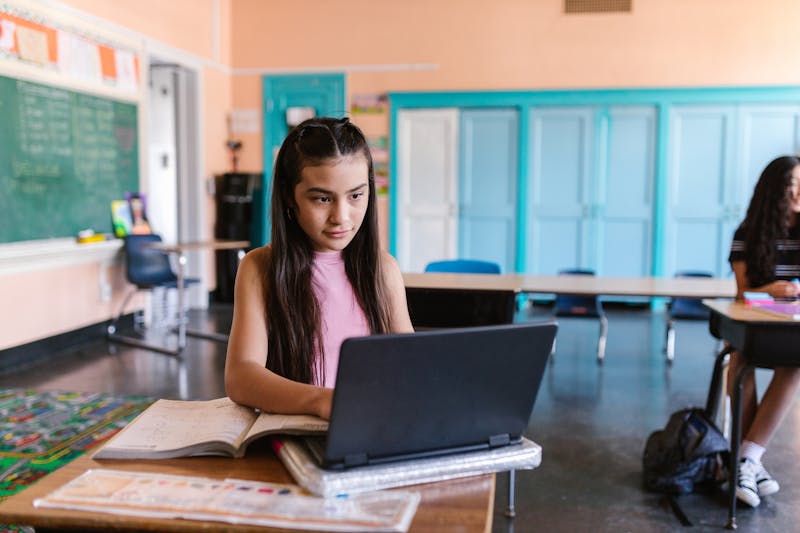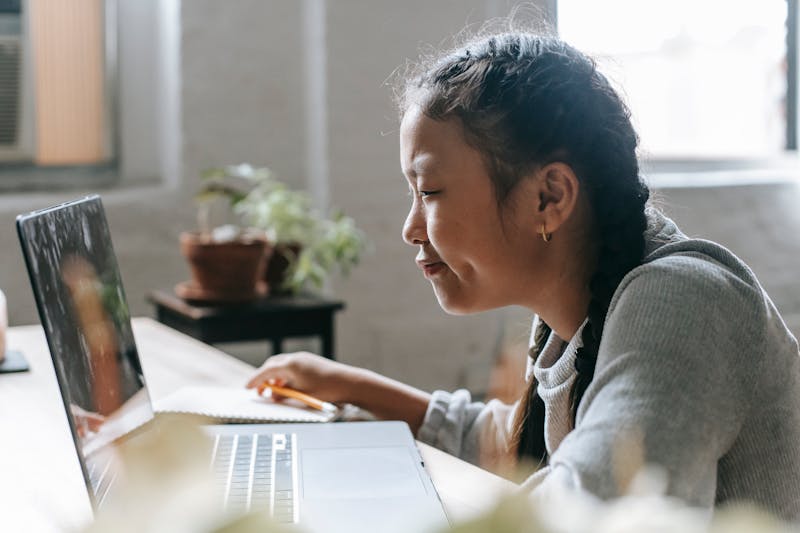
As students spend more time learning and creating on computers, proper desk setup becomes crucial for both comfort and long-term health. A thoughtful workspace helps prevent fatigue, protects developing muscles and joints, and makes typing practice far more enjoyable. Whether at home or in the classroom, a few small adjustments can go a long way toward supporting young learners.
Why Ergonomics Matters for Kids

Children are still growing, so poor posture or awkward typing positions can lead to unnecessary strain. Neck, shoulder, or wrist pain may discourage them from using the computer productively — or even lead to habits that persist into adulthood. Teaching good ergonomic awareness early sets the stage for safe and confident computer use.
The desk should allow feet to rest flat on the floor (or on a footrest if needed). Knees should form a comfortable 90-degree angle, and there should be enough space under the desk for free leg movement. Chairs with adjustable height and back support make it easier to achieve these positions.
Monitor placement is equally important. The top of the screen should be at or just below eye level so kids don’t have to crane their necks. Position it about an arm’s length away to minimize eye strain, and adjust brightness so the screen is clear without glare.
Keyboards and mice need special attention, too. A keyboard that sits too high or low can cause wrists to bend awkwardly. Keep it level with the elbows, and encourage a light touch while typing. A small, well-fitted mouse prevents overreaching and supports healthy hand posture.
Looking for tools to help students build accurate, strain-free typing skills? Explore Typesy’s interactive lessons and ergonomics tips designed for learners of all ages.
Practical Adjustments for Healthier Typing

Once the basics are in place, refine the workspace with details that support focus and comfort:
- Encourage regular breaks. Every 20–30 minutes, students should stand, stretch, or walk for a minute. This promotes circulation and prevents stiffness.
- Use proper lighting. Natural light is ideal, but a soft desk lamp that avoids screen glare also works. Consistent lighting reduces eye fatigue during long practice sessions.
- Support neutral wrist positions. If needed, add a soft wrist rest or adjust the chair so elbows stay close to the body and form a right angle.
- Organize supplies. Keep pencils, headphones, and reference books nearby to avoid awkward reaching that disrupts typing flow.
A clean, uncluttered area reduces distractions, making it easier to focus on lessons or assignments. Developing disciplined workspace habits helps students separate study time from relaxation, improving productivity and posture alike.
Parents and teachers should also model these habits. Demonstrating correct seating and hand placement reinforces what students learn about safe keyboarding. Encourage them to listen to their bodies: if they feel tingling, numbness, or soreness, it’s time to adjust posture or take a quick movement break.
For younger learners, make ergonomics engaging. Use colorful footrests, height-adjustable chairs, or stickers on the monitor to mark where their eyes should line up. Turning healthy setup into a fun challenge keeps motivation high.
Building Lifelong Comfort and Confidence
Protecting young typists from strain isn’t just about avoiding discomfort today — it’s about ensuring a positive relationship with technology for years to come. When students feel comfortable and in control at the keyboard, they’re more likely to practice consistently, leading to better accuracy and speed.
Combine a well-arranged desk with quality instruction on hand placement, finger reach, and gentle keystrokes. Reinforce the value of steady progress over rushing; accuracy builds confidence, and confidence makes learning fun.
Regularly revisit the setup as children grow. A chair or desk height that worked last year may no longer fit. Checking posture every few months keeps the workspace aligned with their changing needs.
Want to help kids type comfortably and effectively? Try Typesy today — our lessons integrate posture tips, finger exercises, and engaging activities to create healthy, confident typists.
